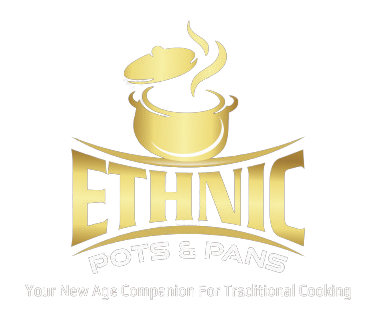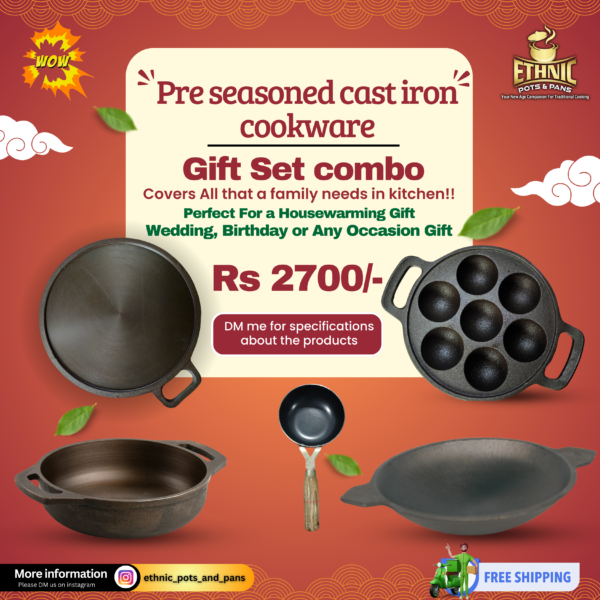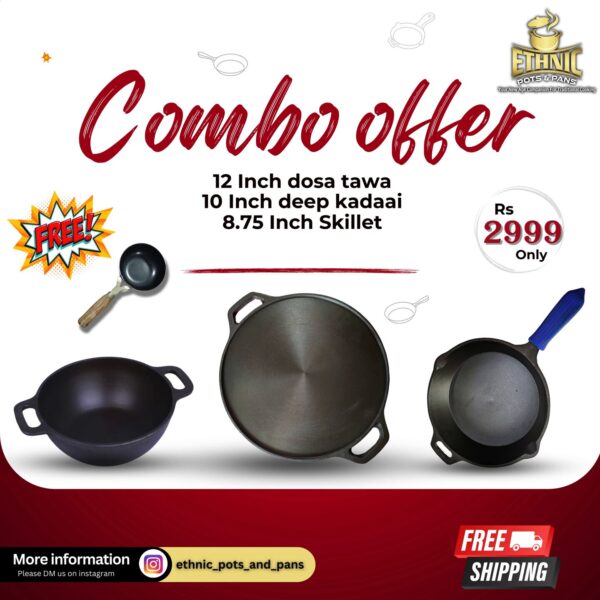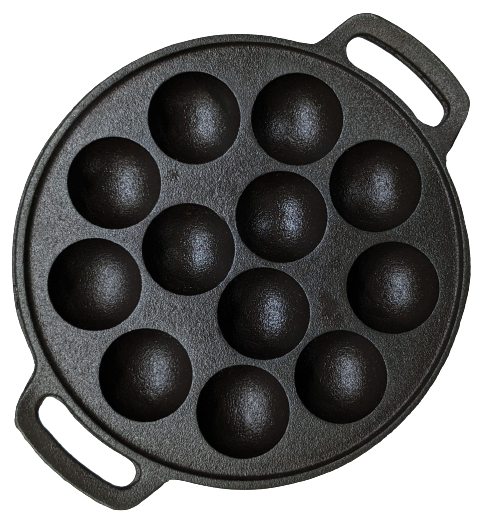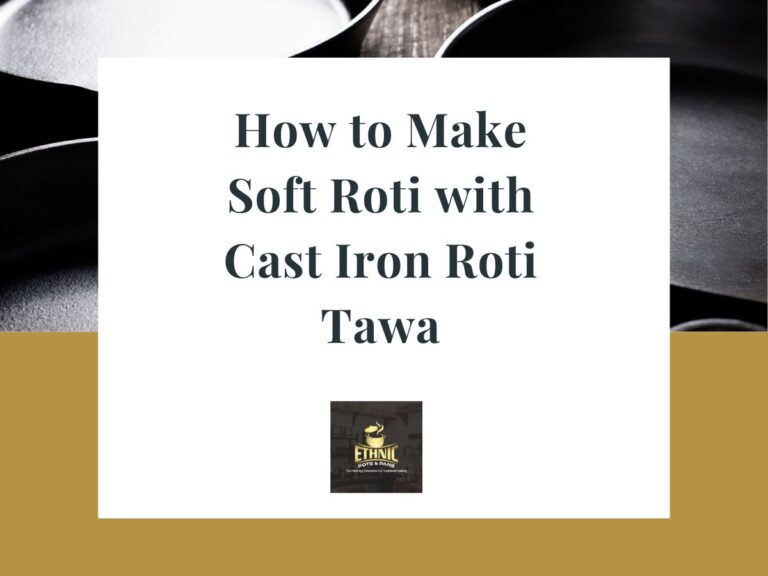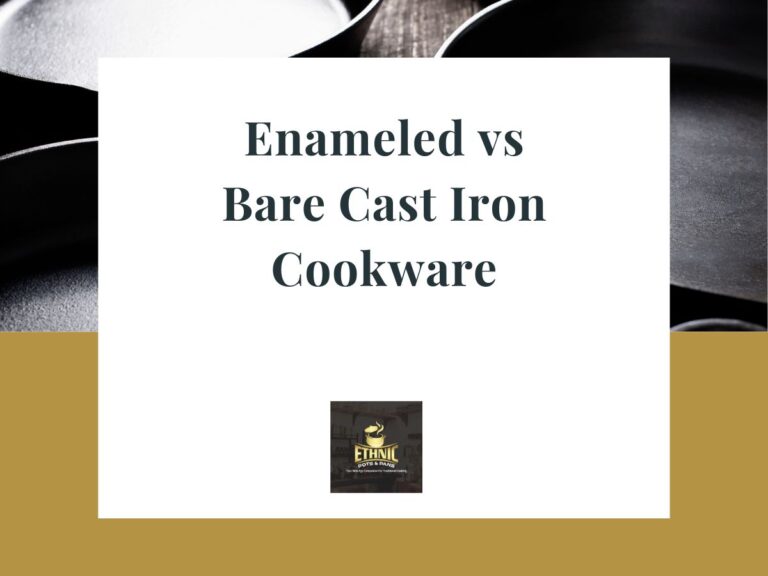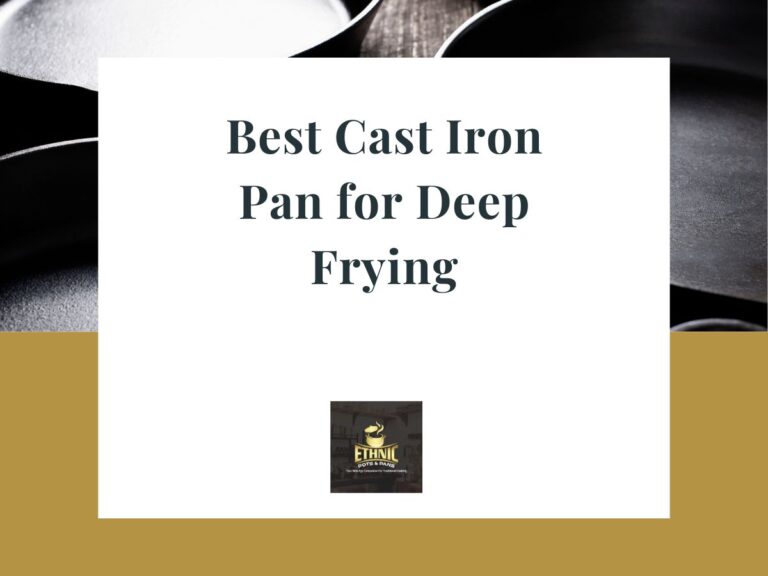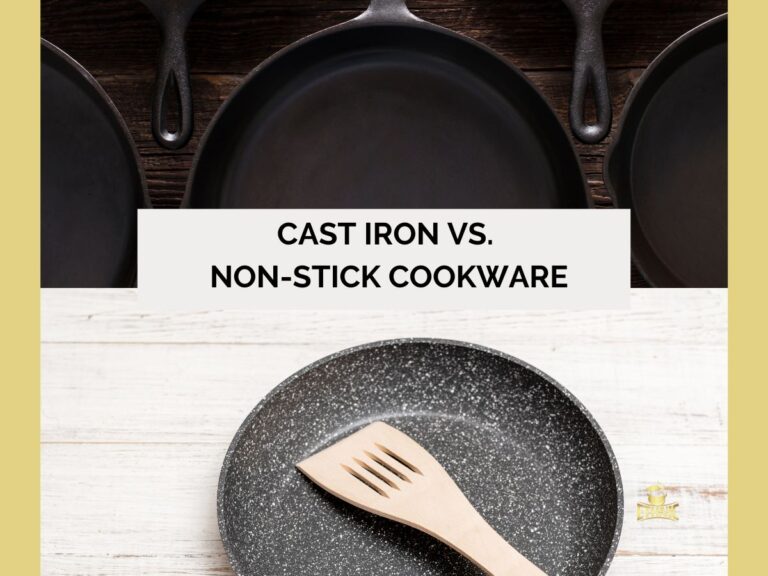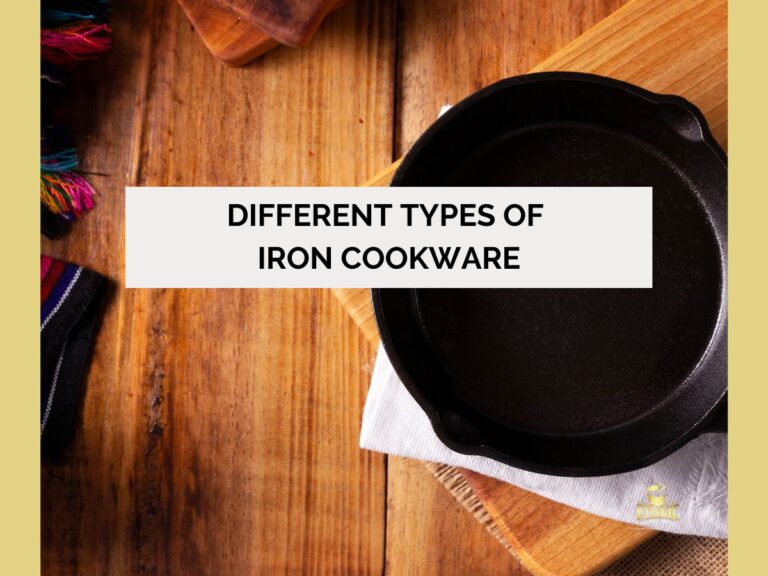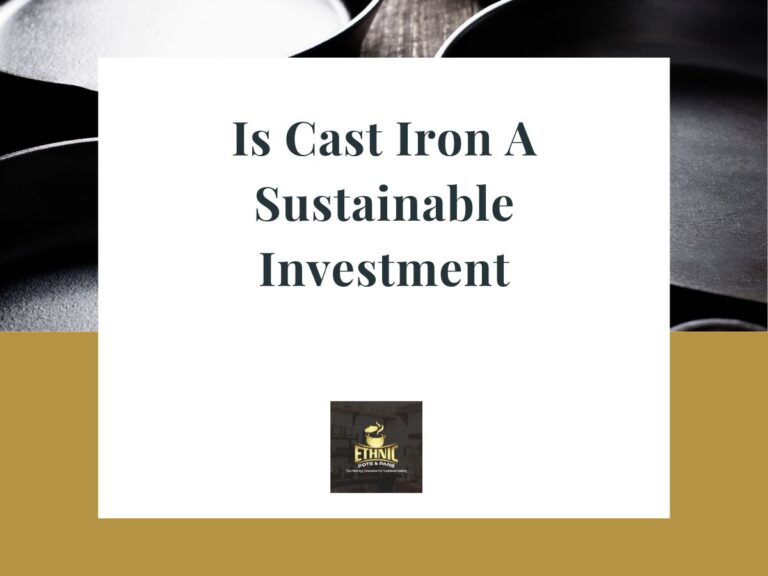Cast iron cookware is known for its durability and longevity, often passed down through generations. However, without proper care, cast iron can develop rust, which may seem like the end of your favorite pan or skillet. Fortunately, restoring rusty cast iron cookware is easier than you might think. At Ethnic Pots and Pans, we believe that every cast iron piece can be brought back to life with the right care and techniques.
In this guide, we’ll walk you through the step-by-step process of restoring rusty cast iron cookware, ensuring it returns to its original glory. From understanding the causes of rust to cleaning, re-seasoning, and maintaining your cast iron, this comprehensive guide covers it all.
Why Does Cast Iron Rust?
Before diving into the restoration process, it’s important to understand why cast iron rusts. Cast iron is prone to rusting because it’s made of iron, which reacts with moisture and oxygen, leading to oxidation. The primary causes of rust in cast iron cookware include:
1. Exposure to Water: Prolonged exposure to water or cooking liquids can lead to rust, especially if the cookware is left wet or not dried thoroughly.
2. Lack of Proper Seasoning: Cast iron needs to be seasoned regularly to create a protective layer that prevents rust. Without this layer, the iron is exposed to moisture, making it susceptible to rust.
3. Incorrect Cleaning Methods: Using soap, steel wool, or soaking cast iron in water for extended periods can strip away the seasoning, leading to rust formation.
Luckily, even a heavily rusted pan can be restored with some effort and the right tools.
-
Beginners Combo/ Gift Set Combo – Pre-seasoned cast iron Combo
Original price was: ₹4,999.00.₹2,700.00Current price is: ₹2,700.00. -
Best Cooking Essentials Combo
Original price was: ₹5,999.00.₹2,999.00Current price is: ₹2,999.00. -
Pre-seasoned 12 Pits flat bottom paniyaaram pan
₹1,500.00 – ₹1,700.00
Tools You’ll Need for Restoration
Before beginning the restoration process, gather the following tools:
– Steel wool or a stiff scrub brush
– Kosher salt (for scrubbing)
– Vegetable oil or flaxseed oil (for seasoning)
– A clean cloth or paper towels
– An oven (for re-seasoning)
– Baking soda (optional, for tough rust spots)
At Ethnic Pots and Pans, we recommend using natural products like salt and oil to clean and season your cast iron, ensuring that it remains non-toxic and safe for cooking.
How to Restore Rusty Cast Iron Cookware
Step 1: Scrub Away the Rust
The first step in restoring rusty cast iron cookware is to remove the rust. Here’s how to do it:
1. Rinse the Pan: Start by rinsing the cast iron cookware under warm water. This helps loosen any debris or surface rust.
2. Scrub with Steel Wool or Brush: Use steel wool or a stiff brush to scrub the rusted areas. Be firm but gentle enough not to damage the pan. The goal is to remove all visible rust until you reach the bare cast iron surface.
– Pro Tip: If the rust is stubborn, sprinkle some kosher salt on the pan and use it as a mild abrasive to scrub away the rust more effectively.
3. Rinse Again: Once you’ve scrubbed away most of the rust, rinse the pan under warm water again to remove any loosened debris.
4. Dry Thoroughly: After scrubbing, it’s essential to dry the cast iron cookware completely. Use a clean cloth or paper towels to wipe off any moisture. To ensure it’s fully dry, place the pan on a stovetop burner over low heat for a few minutes.
Why Is This Step Important?
Removing rust from the surface is crucial to preventing it from spreading further. By scrubbing away the rust, you prepare the pan for re-seasoning, allowing it to develop a protective layer that will shield it from future damage.
Step 2: Re-Seasoning the Cast Iron Cookware
Once you’ve removed the rust, the next step is to re-season the cast iron cookware. Seasoning is a process that involves applying a layer of oil to the pan and heating it, creating a non-stick surface and protecting the cookware from rust.
Instructions for Re-Seasoning:
1. Preheat the Oven: Preheat your oven to 450°F (230°C). This high heat helps the oil bond with the cast iron, creating a strong seasoning layer.
2. Apply Oil: Using a clean cloth or paper towel, apply a thin layer of vegetable oil or flaxseed oil to the entire surface of the cast iron cookware. Make sure to coat the inside, outside, and handles evenly.
– Pro Tip: Avoid applying too much oil. A thin, even layer is best, as excess oil can result in a sticky surface.
3. Bake in the Oven: Place the cast iron cookware upside down on the middle rack of the preheated oven. It’s a good idea to place a sheet of aluminum foil on the lower rack to catch any oil drips. Bake the cookware for 1 hour.
4. Cool in the Oven: After an hour, turn off the oven and let the cast iron cool inside the oven. This helps the seasoning set properly.
5. Repeat if Necessary: If your cast iron was heavily rusted, you may want to repeat the seasoning process 2-3 times to build up a stronger protective layer.
Why Re-Seasoning Is Important
Seasoning creates a protective layer that not only gives cast iron its non-stick properties but also prevents rust from forming. This step ensures that your cookware is ready for future use and will last for years to come.
Step 3: Ongoing Maintenance and Care
Now that your cast iron cookware is rust-free and re-seasoned, maintaining it properly is key to preventing future rust and ensuring it stays in great condition. Here’s how to care for your cast iron cookware on a daily basis:
1. Cleaning After Each Use:
– Avoid using soap. Instead, clean your cast iron cookware with hot water and a stiff brush or sponge. If there’s food stuck to the surface, sprinkle kosher salt on the pan and scrub it gently.
– Rinse the pan with warm water and dry it immediately using a cloth. Leaving moisture on the surface can lead to rust.
2. Drying and Storing:
– After cleaning, always dry your cast iron cookware thoroughly. You can dry it on a stovetop over low heat for a few minutes to remove any residual moisture.
– Once dry, apply a thin layer of oil to the surface before storing it to maintain the seasoning.
3. Avoiding Harsh Conditions:
– Don’t leave your cast iron pan soaking in water, as this can strip the seasoning and lead to rust.
– If possible, avoid cooking highly acidic foods (like tomatoes) for long periods, as the acids can break down the seasoning layer.
4. Regular Re-Seasoning:
– If you notice the surface becoming dull or food starting to stick, it’s a sign that the pan needs re-seasoning. Simply apply a thin layer of oil and heat it in the oven as mentioned earlier.
At Ethnic Pots and Pans, we always recommend maintaining your cast iron cookware by seasoning it periodically to keep it in top shape for all your cooking needs.
Restoring rusty cast iron cookware may seem daunting, but with the right techniques, it’s a simple process that breathes new life into your favorite cooking tool. By scrubbing away the rust, re-seasoning the cookware, and following proper maintenance, you can ensure that your cast iron pans and skillets last a lifetime.
At Ethnic Pots and Pans, we are committed to providing high-quality cast iron cookware that not only stands the test of time but also enhances the flavor and quality of your food. With proper care, your cast iron will become a cherished part of your kitchen, offering delicious meals for years to come.
